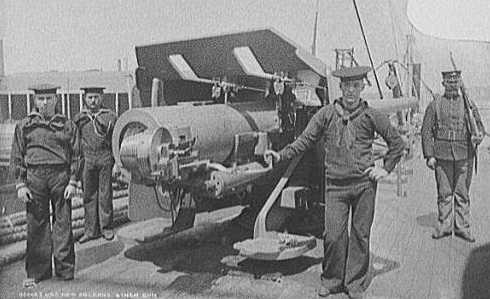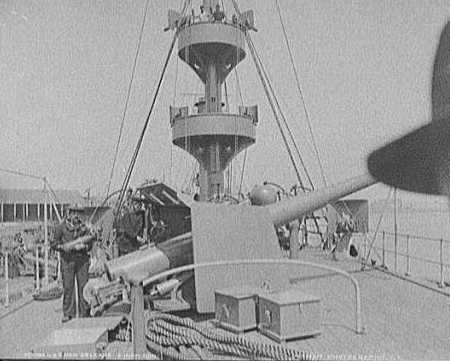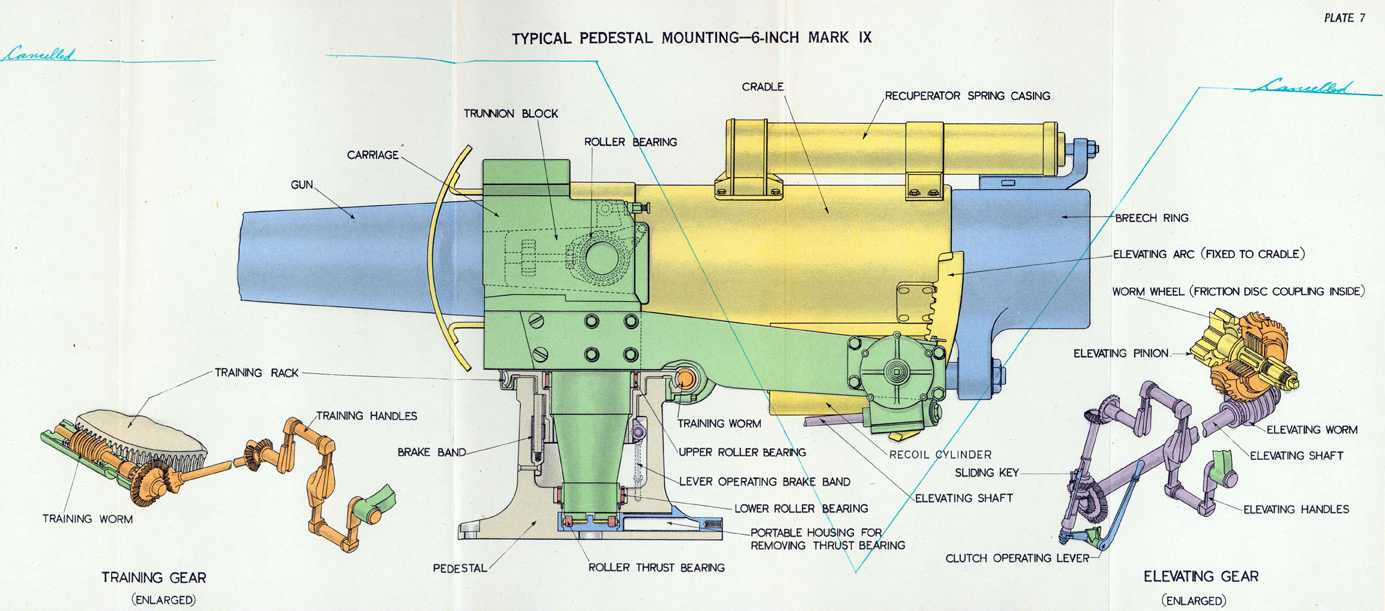|
These ships had a main armament of six 6"/50 (15.2 cm) guns built by Armstrong to their QF Pattern DD and a secondary battery of four 4.7"/50 (12 cm) guns. This armament was not well liked in the USN, as the guns used non-standard ammunition and spare parts. For that reason, the 4.7" (12 cm) guns were replaced in 1903 and the 6" (15.2 cm) guns followed in 1907. At that point these ships had a uniform battery of ten 5"/50 (12.7 cm) guns. In 1907 the removed British guns were emplaced in the Philippines on Grande Island and at the mouth of the harbor at Subic Bay. The British 6"/50 Mark IX and Mark X were experimental coast defense guns with differing breech blocks. These were BL versions of the QF design used on the Brazilian/USN ships. Only one gun of each of these Marks was manufactured and these were designated as EOC Pattern DD1 and DD2, respectively. All of these guns were of built-up construction and had an actual bore length of 49.5 calibers. The data that follows is for the 6"/50 (15.2 cm) Mark 5 (Armstrong) guns as used in USN service, but the guns on Brazilian and Chilean ships should be identical. |

Protected Cruiser New Orleans in 1898
|

6" (15.2 cm) gun on New Orleans circa 1898
|

6" (15.2 cm) gun on New Orleans circa 1898
|

Sketch of 6"/50 (15.2 cm) Mark IX showing
a typical British Pedestal Mounting
|